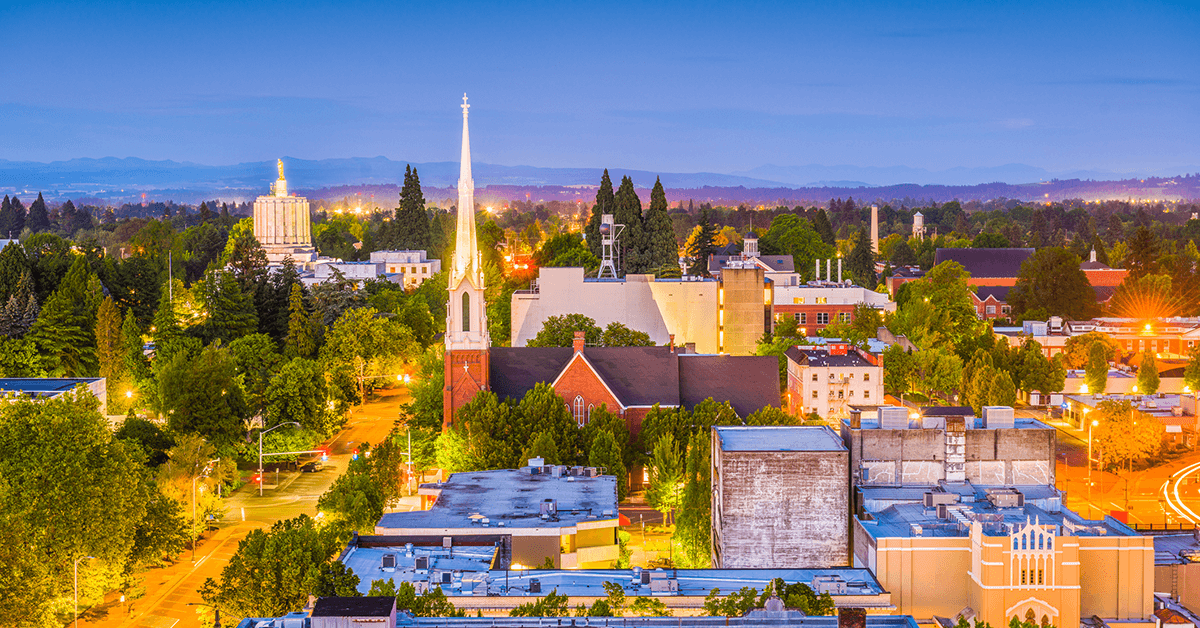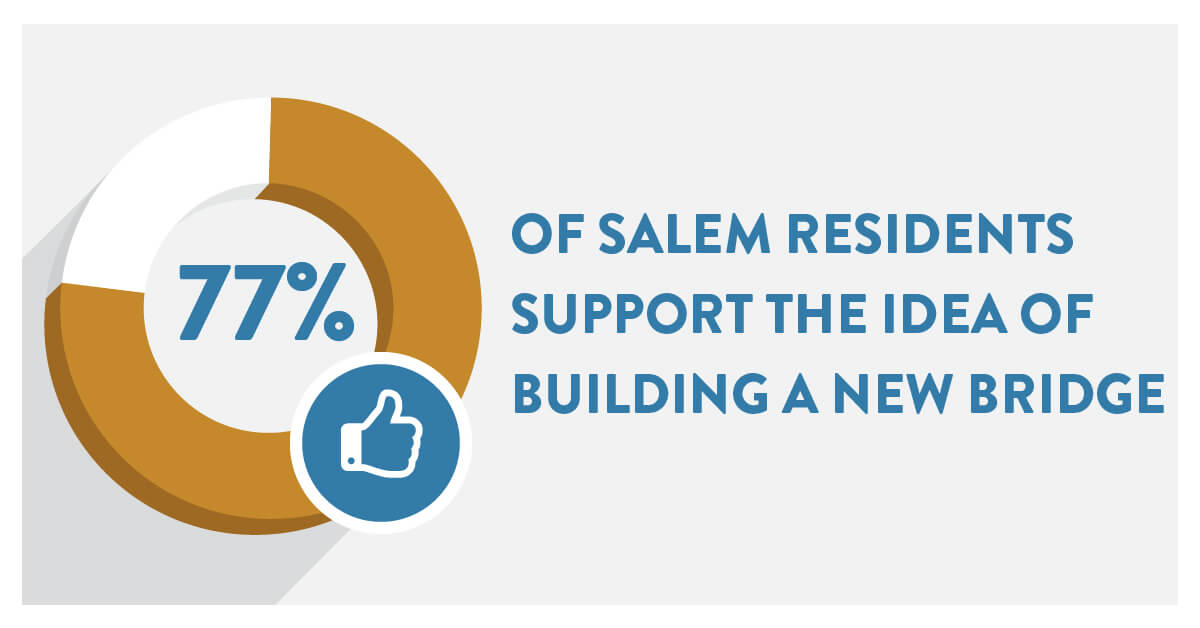
Action on Salem River Crossing delayed again, sparking frustration
Time is Running Out on a New Bridge in Salem—Act Now!
Despite an overwhelming majority of city residents supporting the building of a third bridge over the Willamette River, Salem City Council has continued to punt on the Salem River Crossing Proposal.
A third meeting on the issue is slated for January 30. At the City Council meeting last November, supporters of the bridge urged Council to respond to concerns by Oregon’s Land Use Board of Appeals (LUBA).
A motion was introduced by Council Member Jim Lewis at the November Council meeting asking that Council take the required actions to respond to the LUBA remand and support the completion of the Final Environmental Impact Statement for the Salem River Crossing.
A majority of Council instead voted in favor of a substitute motion made by Council Member Tom Andersen and decided not to approve the motion and holding a work session on Jan. 30 instead.
It’s a curious decision by the Council considering 77 percent of Salem residents support the idea of building a new bridge, according to a survey conducted in 2017 by the Nelson Report, a public opinion research firm.

And Council’s inaction is not sitting well with neighboring municipalities.
Support from next door
Keizer Mayor Cathy Clark attended the November work session and called on Salem to do what is necessary to complete the Environmental Impact Statement and to have city staff begin working on the appeals and the response to LUBA, something that could be accomplished in the next six months.
She argued that this would allow all communities in the region to identify the best ways to connect Polk and Marion Counties across the Willamette River.
Supporters reminded the Council that the motion was not to build a bridge, but to move forward with the information gathering required to make a fair and balanced decision for the community.
Quite simply, Salem continues to grow. With growth, comes additional infrastructure needs. In this community, the chief infrastructure need has been to build a third bridge over the Willamette River.
The growing traffic headache
Mid-Valley residents need a new bridge to reduce traffic congestion and to help ease their commutes for work, school and entertainment, not to mention, help save their cars from guzzling gas or wearing down faster from constant stops and starts.
Currently there is only one access point connecting East Salem, West Salem, the coast and the surrounding communities. The traffic has become onerous. The latest traffic volume numbers over the two Salem bridges are the highest ever and they continue to rise. In 2017, 72% of all weekday traffic counts exceeded 100,000 vehicles per day.
Accidents or events at the bridge (such as the overturned hay truck last October) happen frequently and negatively impacts the traffic flow of goods and services as well as the previously mentioned mobility needs of Mid-Valley residents.
There may not be any long-term answers to seismic threats that the current bridges can address. By the Fall of 2019 a better understanding of the feasibility of a seismic upgrade for the Center Street Bridge and approaches will be known. However, due to its design and age, the Marion Street Bridge is not being considered for any seismic upgrades. Mitigation for seismic hazards using modern standards would be part of the structural design of the new bridge.
A history of delay
Efforts to get a third bridge built goes back decades. The Oregon Department of Transportation (ODOT), the city of Salem and the Salem-Keizer Area Transportation Study (SKATS) have had a funding agreement since 2006 to examine this possibility. Since that time, more than $8 million has been spent on the Salem River Crossing Study and the Environmental Impact Study (EIS). The Federal Highway Administration (FHWA) has extended the deadline on a decision for this potential new bridge to Sept. 30, 2019 at which time ODOT and SKATS may be asked to pay back a portion or all of the federal money expended on this project.
Completion of the Final EIS and a Record of Decision is only a first step in the process. It gives SKATS permission from FHWA to take the next steps. Construction of a new bridge and other parts of the plan will take many years and would potentially be done in several phases. Funding and actual construction phasing won’t happen until a later date.
However, the LUBA concern is a fair one. It found the city used the wrong population forecast in 2016 as well as other zoning and compliance issues within Salem’s land-use plan.
To address this, Salem would have to work with the Mid-Valley Council of Governments to get the proper population figures and conduct transportation analyses.
Additionally, the area would need to be re-zoned to allow for only urban transportation use. Because some of the land is outside of the city limits, the Polk County Board of Commissioners would have to get involved, potentially creating an annexation of land scenario.
The ball is in Council’s court
There is a lot that needs to be done, but City Council continues to sit on its hands regarding the matter, and the longer it does, the more the community will be impacted.
Supporters will be able to once again show up at City Hall for the Jan. 30 work session, and to call on Council to finally take needed action when a motion to respond to LUBA comes before the Council again, most likely on February 11.
But will it take that action?
Abandoning the process now, which could be the end goal for Council, could set back the Mid-Valley region for decades.
Take Action Now: Urge your City Councilor to vote YES on the Motion to respond to the Land Use Board of Appeals remand regarding the Salem River Crossing project.
TAKE ACTION NOW TO SUPPORT A NEW BRIDGE
Urge your City Councilor in Salem to vote YES on the Motion to respond to the Land Use Board of Appeals remand regarding the Salem River Crossing project.





